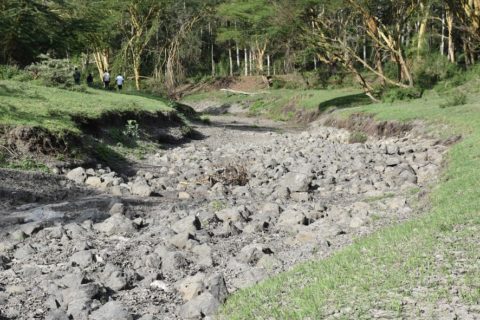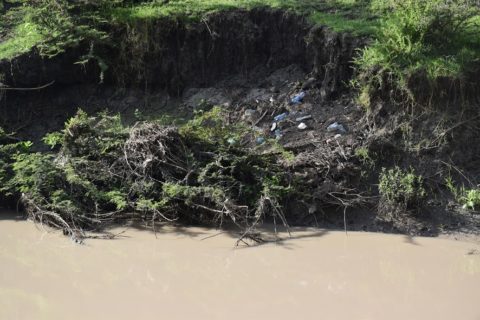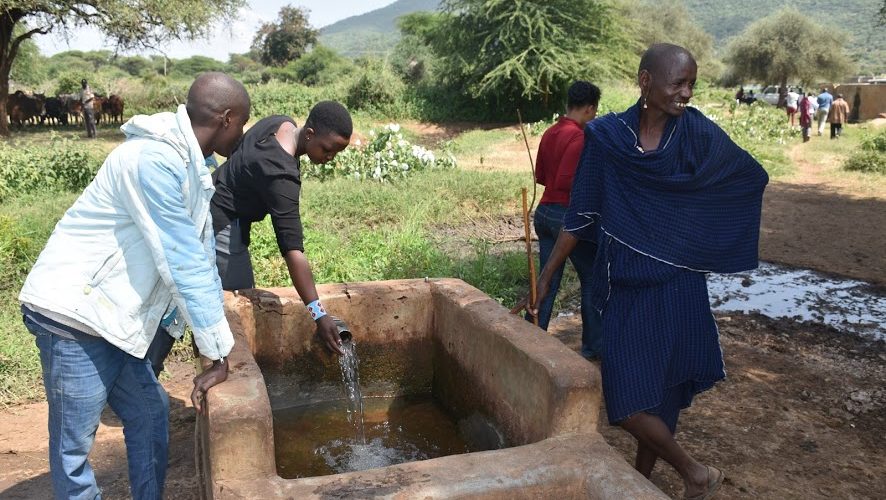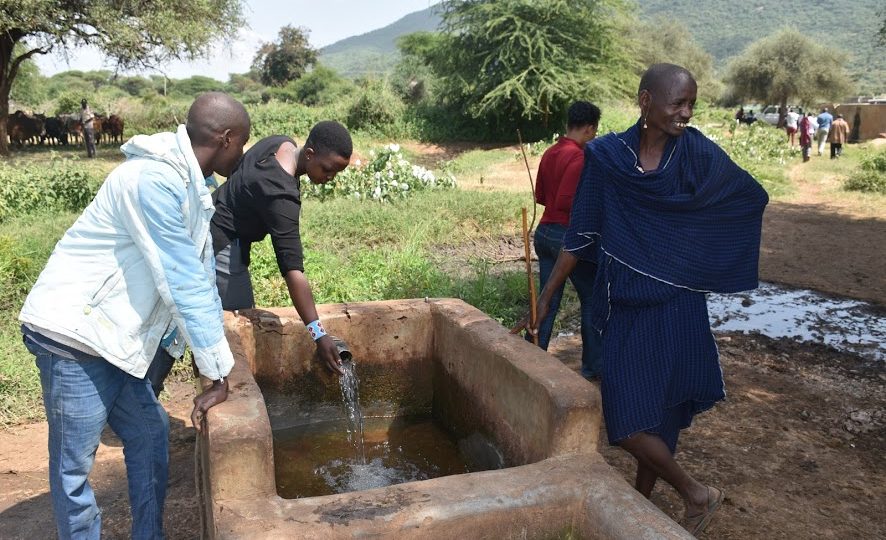Kenya is a chronically water scarce country (UNEP, 2008). This means that demand for water is greater than the renewable freshwater resources that the country can access. According to studies, Kenya’s natural endowment of renewable freshwater currently stands at 600 cubic meters per capita per annum. Estimates of water supply in Kenya indicate that only about 56 per cent of the population has access to safe water (water.org, 2020).
Located in the southern part of the country, Kajiado County is mainly arid and semi-arid with limited water resources. According to the Government of Kenya (2010), its freshwater supply was 162 cubic meters per capita per annum. Surface water resources – rivers, streams, lakes – are often seasonal and limited. Kajiado also experiences frequent drought and flooding exacerbated by climate change. During the long rainy seasons, extreme heavy rains burst riverbanks especially in the upper and lower parts. Groundwater has therefore become the primary source of water in many of the areas for both agricultural and domestic use (Kajiado CIDP, 2018). Moreover, as a result of poor drainage and sanitation, some aquifers within the county suffer high levels of pollution which contaminate ground water.

Dry river bed in Kajiado County
To address this challenge, the Watershed program, through Wetlands International, Neighbors Initiative Alliance (NIA), the Center for Strategic Planning and Administrative Development (CESPAD) and the County Government of Kajiado, has made several interventions to map, analysis and disseminate information on water resources management including water points and water resources (Jakinda S., 2018). Some of these interventions entail mapping some of the water quality parameters through simulation of hydrological processes in the County. This provides insights on how land use processes affect water quality and is crucial as most of the Kajiado County residents rely on surface runoff and groundwater from boreholes and wells.
To do so, we applied Geographical Information Systems (GIS) techniques to help highlight water availability, distribution and use to inform decision-making on water resource management (WRM) at local, county and national levels. This ties in with Watershed’s goal to deliver improvements in the governance and management of water, sanitation and hygiene (WASH) services in addition to water resources.
Establishing Ecosystem Database
To set the stage, a baseline survey was conducted by the program in 2017 to identify the main key barriers to water security. Those ascertained were population growth, point and non-point source pollution, soil degradation, food insecurity, surface and groundwater quality impairment and weak institutional coordination and governance. Solving these water supply and resource challenges require an improved understanding of the basic physical, biological, economic and social processes; and the knowledge on how these components are fused within the catchments. This helped the project team to design a flexible approach that integrated biophysical, social and economic mapping and assessment methods.

Plastic waste dumped at one of the water resources in Kajiado
Water resource assessment and management require handling of multiple forms of spatial data. GIS offers powerful tools for the collection, storage, management and display of information whereas simulation models can provide decision-makers with interactive analysis tools for understanding the physical system and judging how management actions may affect that system (National Research Council 1999). The solutions must serve competing groups of users.
Moreover, sometimes it is difficult to translate research outcomes into policy and management strategies given that a lot of basic research is conducted at specific sites. Conversely, many policies and management strategies are focused on catchments and / or administrative jurisdictions. Additionally, a significant problem of water scarcity and groundwater reduction is the difficulty to formulate effective policies while there remain gaps in knowledge on the hydrological and management processes (Pavelic et al., 2012).
Such uncertainty arises from the complex nature of hydrological systems and the challenges of accurate measurement of the different components of these systems. For instance, one of the key findings was that Kajiado County catchments are complex due to the fact that they are transboundary in nature. Some of its waters originate from Tanzania within one of its catchments, while in another catchment water drains into Tanzania. While the transboundary nature may not be an isolated phenomenon, it is often a daunting task solving challenges that may be presented at an international level through dialogue and other diplomacy tactics owing to heterogeneity of policies particularly between Kenya and Tanzania.

Training on environmental and risk assessment in Kajiado
At the least level of hydrological modeling, semi-distributed models provide insights into the local water balance and how different management decisions and / or climate change impacts patterns of water availability and use. Unique to this project was the establishment of an ecosystem database to provide inputs for future scenario development and management for decision making to support policy development in light of dynamic land use practices and climate change.
What Next?
There is need for progression that is essential for effective water management in Kajiado County. This includes additional knowledge on the upstream-downstream linkages in the catchment; improved access and use of low-cost indicators of catchment conditions and qualitative methods to evaluate land use and catchment management practices; and user-friendly advanced catchment models for non-scientific decision-makers.
In addition, there are several steps that need to be taken. One, there is need to centralize the relevant socio-economic, environmental and topographic data currently retained by different institutions. Two, communication between data scientists and policy-makers must improve to strengthen adaptive planning efforts. Finally, a multi-stakeholder approach should be embraced to address transboundary challenges both at the international and national level.
As part of its implementation, Watershed program is contributing towards the above through the WASH / WRM forums at county and sub-county levels and support to policy and plan framework development.

